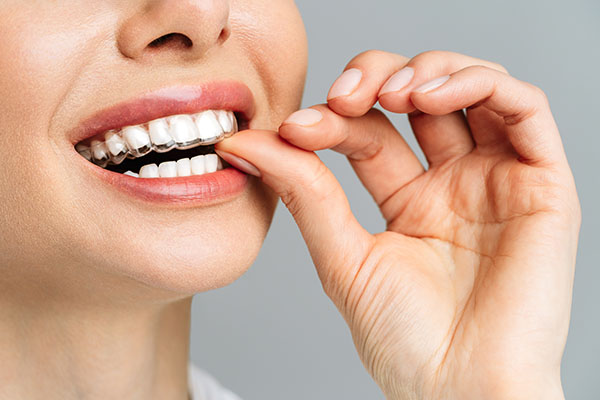Teeth Whitening
Options | Treatments | Procedure | Cost | Side Effects
What is Teeth Whitening?
Teeth whitening, sometimes called teeth bleaching, is a cosmetic dental procedure that involves different methods of lightening the shades of your teeth. This treatment is a popular choice amongst clients, as tooth discoloration is one of the most noticeable dental issues, especially when putting on a smile.
Teeth discoloration and stains often occur due to poor dental hygiene, surface stains from food or liquids, aging, tobacco use, and others. These result in the teeth having a yellowish or tarnished look. Fortunately, oral care experts have developed safe and seamless treatment options for these.

Options
What are the teeth-whitening options?
There are various teeth whitening options you could choose from:
-
Whitening Agents
These are commonly used for in-office appointments, where solutions such as hydrogen peroxide or carbamide peroxide are coated on your teeth, and later activated using a curing light or laser.
-
Customized Tray Bleaching
This option is usually done at home, where you will fit mouthguard-like trays to your teeth and wear them for a certain time period. Carbamide peroxide is often put into these trays, so it may take longer for them to work.
-
Whitening Strips
This option doesn’t require a dental appointment, as there are various over-the-counter products that you can purchase. Since these products usually have less hydrogen peroxide, you can use them one to two times a day for as long as it says on the package.
-
Activated Charcoal
Often found in dental products such as toothpaste, activated charcoal is advertised as a teeth-whitening agent but has not been scientifically proven yet. If you want to use products with this ingredient, you should talk to your dentist before trying them.


Treatments
At-Home Vs In-Office Bleaching
-
At-Home Whitening Treatment
An at-home teeth whitening treatment is considered to be less expensive than an in-office treatment. With this option, your dentist will make an impression of your teeth, which will then be used to make a custom tray that will fit the shape of your mouth. Then, you’ll be provided with a whitening gel, which you will place in the tray before wearing it for your treatment. The whitening agent is oftentimes based on carbamide peroxide instead of hydrogen peroxide. Because of this, you’ll be less likely to experience sensitivity if the gel accidentally gets onto your gums, tongue, or cheeks. Depending on the severity, the treatment could last for a couple of weeks, but results can be visible after a few days.
Over-the-counter (OTC) whitening kits can also be done at home and do not require a dentist’s appointment. However, these kits may not fit well around your teeth. Also, some OTC products might have less carbamide peroxide than custom-made, professional trays. -
In-Office Whitening Treatment
This option often requires several quick visits to the dental office, depending on your needs and/or the assessment made by the dentist. A visit usually occurs for about one to one and a half hours, where a concentration of hydrogen peroxide, a whitening agent, is applied to your teeth and left on for a time period and is repeated in various increments, depending on your treatment plan. At times, fluoride is also applied to help ease tooth sensitivity that might occur after the procedure.
Procedure
Teeth Whitening Procedure
Here are some standard steps during an in-office teeth whitening procedure:
-
1 – Dental Exams
During this stage, your dentist will take a look at your dental records and history. This initial examination helps your dentist determine if you have prior dental issues and whether you have dental crowns, veneers, or implants. Knowing about these is important as it may affect the coloration of your teeth after the treatment. It is also during this step that you and your dentist will discuss things such as the shade of white that you want to achieve.
-
2 – Cleaning
This step involves your dentist using a pumice tool to remove your teeth from any bacterial build-up and remaining plaque.
-
3 – Preparation
During this step, your dentist will take safety measures before proceeding to the whitening agent application. These precautions include isolating your mouth with gauze to keep the teeth dry. Retractors might be used to keep your mouth open and to prevent the agent from spilling into your mouth’s fleshy parts. A barrier is then positioned along your gum line for added protection.
-
4 – Application
During this part, the surface of the teeth will be coated with the whitening gel, and then left on for several minutes, and then repeated for up to an hour. The percentage of the whitening solution is also adjusted according to your assessment with the dentist. Additional coatings may also be applied, depending on your treatment plan.
-
5 – Activation
Your dentist will use a curing light (mostly LED) or laser to activate the whitener. This part of the procedure is also called the oxidation process, where the chemicals go deep into the enamel layer to reach the dentin, which helps lighten your teeth’s pigment from the inside.
-
6 – Fluoride Application
The application of fluoride depends on your treatment plan, as it helps strengthen the enamel to prevent tooth sensitivity, especially after the treatment.
-
7 – Evaluation
After the treatment, your dentist will do another evaluation to see if you need more whitening and to tell you how to take care of your teeth after the treatment.
Who benefits from teeth whitening?
People who suffer from tooth discoloration, as well as those who wish to enhance the brightness of their smiles, are the ones who can benefit from this treatment. Common symptoms of teeth whitening clients include a visible yellowish or tarnished look on their teeth. Teeth discoloration is often caused by stains from food, liquids, and/or tobacco use. Other causes may include medication use, infection, aging, or tooth trauma.
Is teeth whitening safe?
Professional teeth whitening is a safe treatment, as it is a non-invasive procedure, and you will be under the guidance of an oral health professional throughout the process.
What teeth whitening methods and tools do dentists use?
Dentists use different kinds of tools when performing teeth whitening procedures. Apart from the peroxide whitening solution, there are also tools to help prevent the whitening solution from spilling into the fleshy parts of your mouth to avoid irritation. These include the pumice tool that removes the existing plaque from your teeth, the retractors that help cover your tongue, lips, and cheeks during the procedure; and the protective barrier that covers your gums.
How long does the teeth whitening result last?
The longevity of the treatment varies on a case-to-case basis. Maintaining good oral health practices is encouraged to provide long-lasting results.
- For in-office teeth whitening treatment, the result can last from 1 to 3 years, depending on the oral health maintenance of the patient.
- At-home whitening treatments often last for a year or longer, also depending on the patient’s oral hygiene.
Cost
How much does a teeth whitening procedure cost?
The cost of a teeth whitening treatment may vary, depending on the location and the treatment plan customized for you. Industry rates range from as low as $200 to as high as $1,000. For a more accurate quote, feel free to contact us and we’ll be happy to assist you!
Side Effects
What are teeth whitening side effects?
While the procedure itself is safe and does not require complex methods, results will still vary with each patient. Some may experience side effects post-treatment, including:
- Gum Irritation
Gum irritation is one of the most common side effects of teeth whitening, as the whitening agent has this effect on your gums. However, if the irritation persists for more than 48 hours, consult with your dentist as soon as possible. - Hypersensitivity
You can experience temporary hypersensitivity after the procedure, as the teeth have become exposed to high levels of peroxide. This is why some treatment plans involve the application of fluoride, as it helps strengthen the enamel. - Uneven Shade
This is common for patients with dental restorations such as crowns, veneers, and implants. - Gastrointestinal Irritation
This mostly occurs when a patient swallows a whitening solution and may result in mild stomach aches.
FAQs
Does a teeth whitening procedure hurt?
While the procedure itself won’t cause you any pain, you may experience some side effects such as tooth sensitivity and gum irritation. To get rid of these side effects, it’s best to talk to your dentist about how to care for yourself after treatment.
How long will my sensitivity last after the teeth whitening procedure?
Teeth sensitivity can last for a few hours to a few days post-treatment. If these symptoms persist, consult with your dentist immediately.
Why should I whiten my teeth?
This procedure is for people who want to make their smiles brighter and feel better about themselves.
Are non-white teeth unhealthy?
While having plaque and stains can cause yellowish teeth, it doesn’t mean that they’re not unhealthy! To ensure that your teeth stay in tip-top shape, just maintain good oral health and hygiene, and make sure to have them checked by the dentist from time to time.
Does the teeth whitening procedure hurt or damage my enamel?
Not at all! In fact, it strengthens the enamel on your teeth, which prevents them from further decay.
If you want to have the most beautiful smile ever, consult now with the best dentist in Toronto for FREE!
Dynasty Tower Dental offers the best cosmetic dental procedures in North York, Ontario! Our team of oral health experts has more than two decades of experience in upgrading the quality of patients’ smiles, so reach out to us here!
